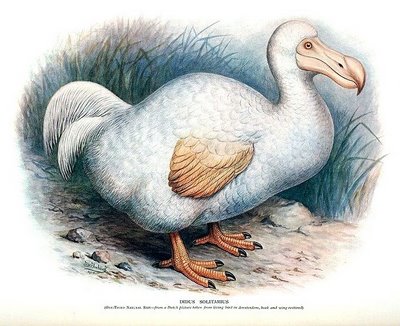

The decline of the tree may possibly be due to introduction of domestic pigs and Crab-eating Macaques and competition with introduced plants. Wendy Strahm and Anthony Cheke, two experts in Mascarene ecology, claim that while a rare tree, it has germinated since the demise of the Dodo and numbers a few hundred, not 13.The difference in numbers is because young trees are not distinct in appearance and may easily be confused with similar species. Others have suggested the decline of the tree was exaggerated, or that other extinct animals may also have been distributing the seeds, such as tortoises, fruit bats or the Broad-billed Parrot. Temple's hypothesis that the tree required the dodo has been contested. Reports made on tambalacoque seed germination by Hill (1941) and King (1946) found the seeds germinated without abrading. Temple did not try to germinate any seeds from control fruits not fed to turkeys so the effect of feeding fruits to turkeys was unclear. Temple (1977) force-fed seventeen tambalacoque fruits to wild turkeys and three germinated. Stanley Temple hypothesized that the Dodo, which became extinct in the 17th century, ate tambalacoque fruits, and only by passing through the digestive tract of the Dodo could the seeds germinate. The true age could not be determined because Tambalacoque has no growth rings. There were supposedly only 13 Dodo Tree specimens left, all estimated to be about 300 years old.

In 1973, it was thought that this species was dying out. Both have a hard endocarp surrounding the seed, with the endocarp naturally splitting along a fracture line during germination. Tambalacoque (Sideroxylon grandiflorum formerly Calvaria major), also called the Dodo Tree, is a long-lived tree in the family Sapotaceae, endemic to Mauritius. Here is some detailed information on the dodo tree. Dodo Tree, Facts & Information on the Dodo Tree Species


 0 kommentar(er)
0 kommentar(er)
